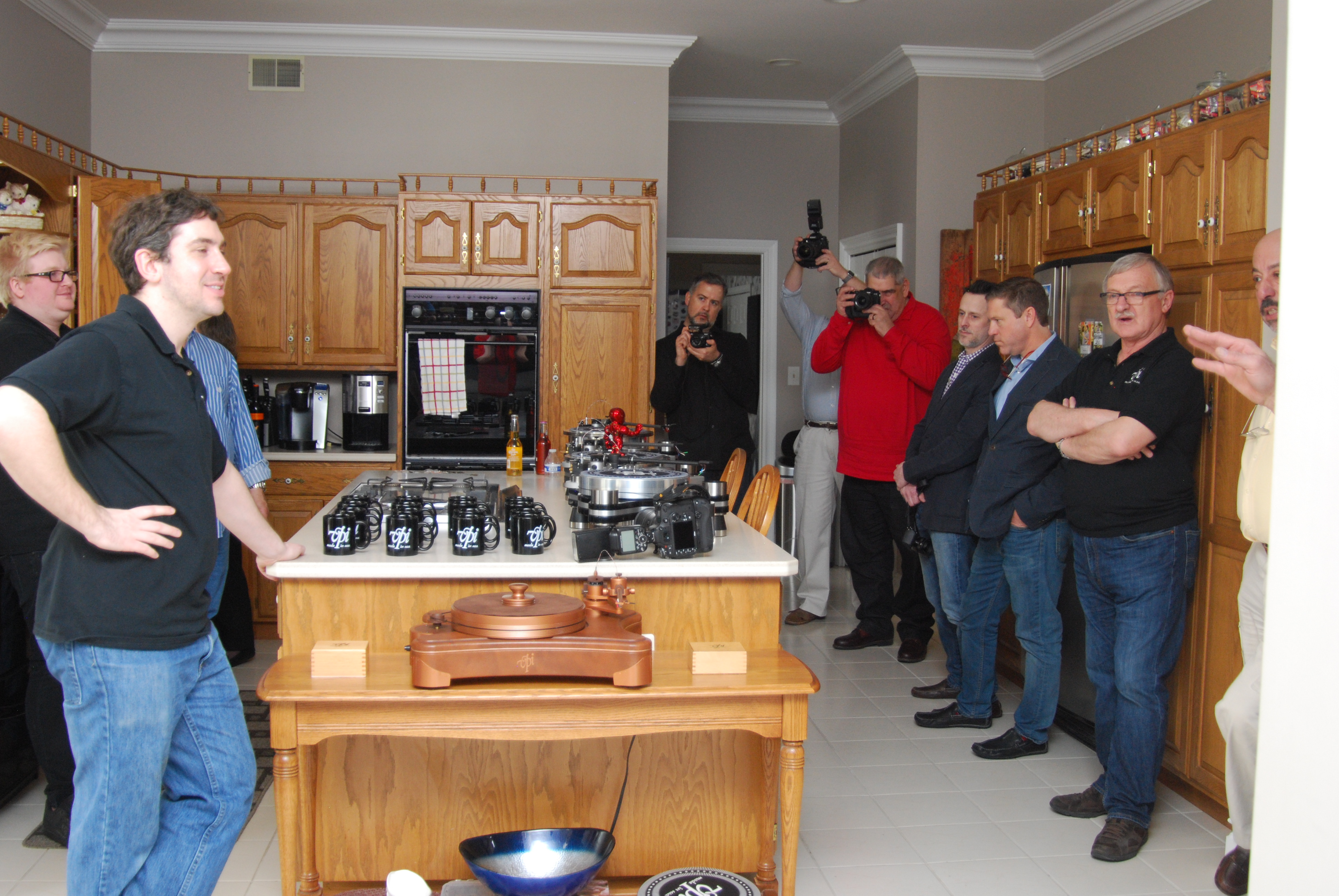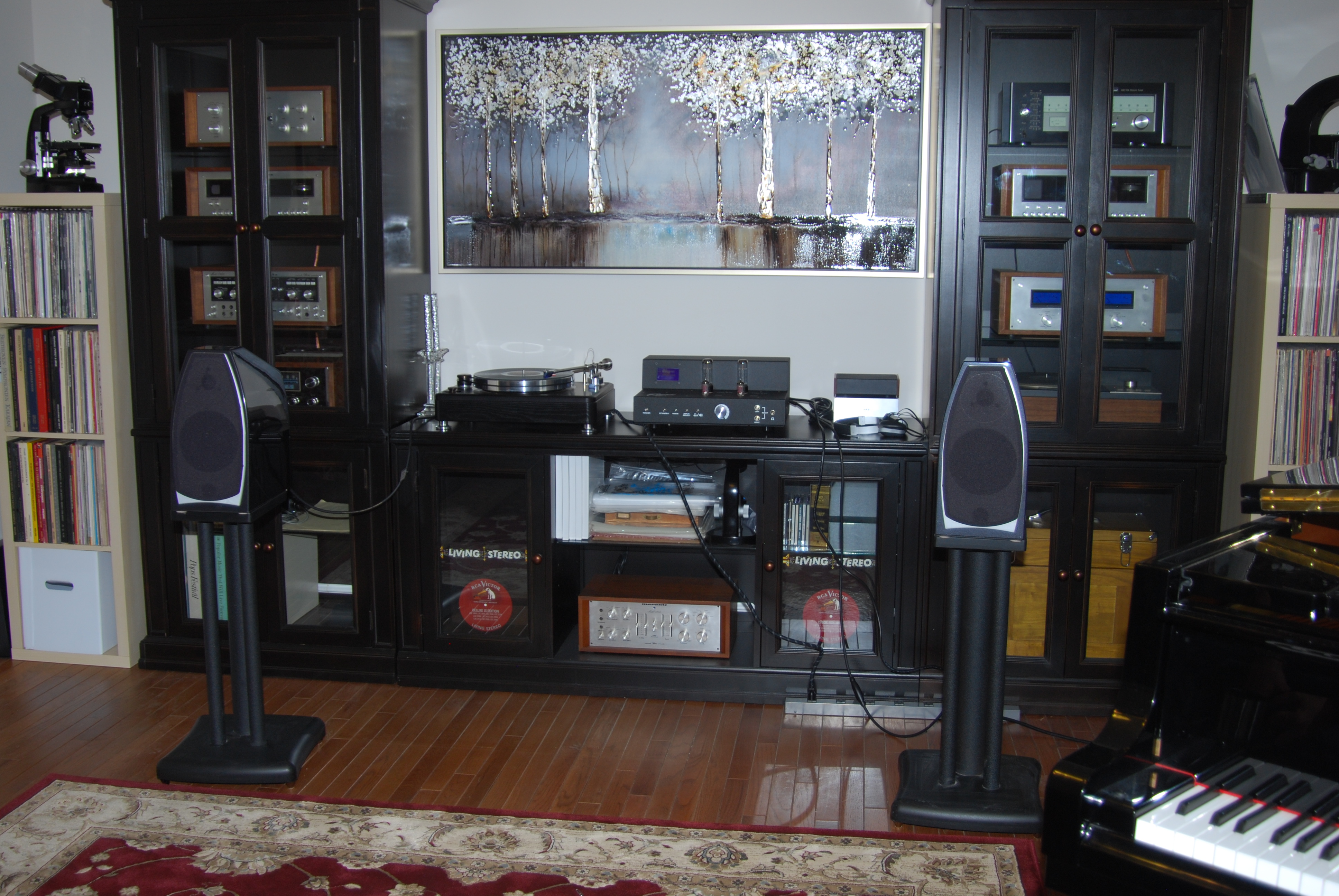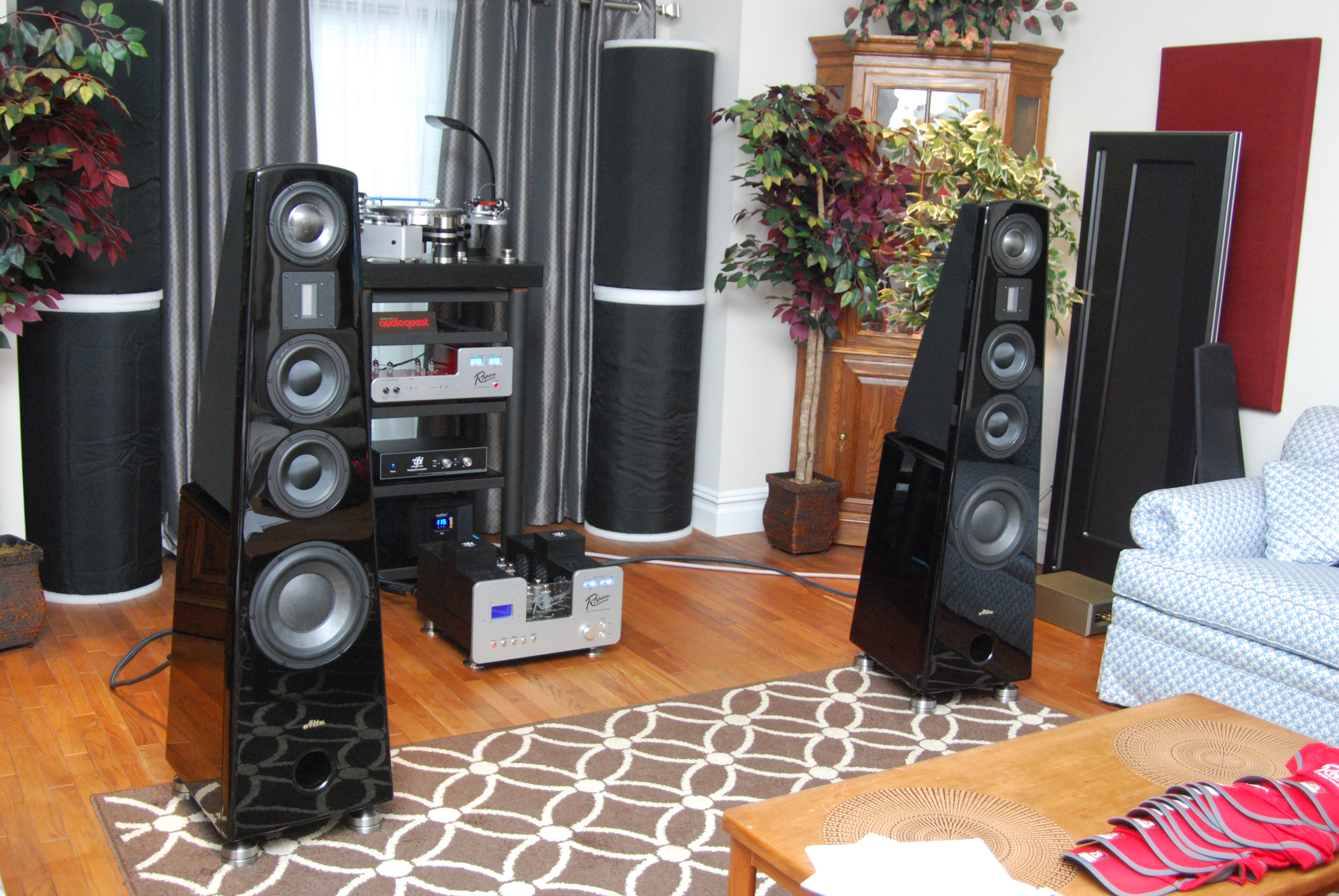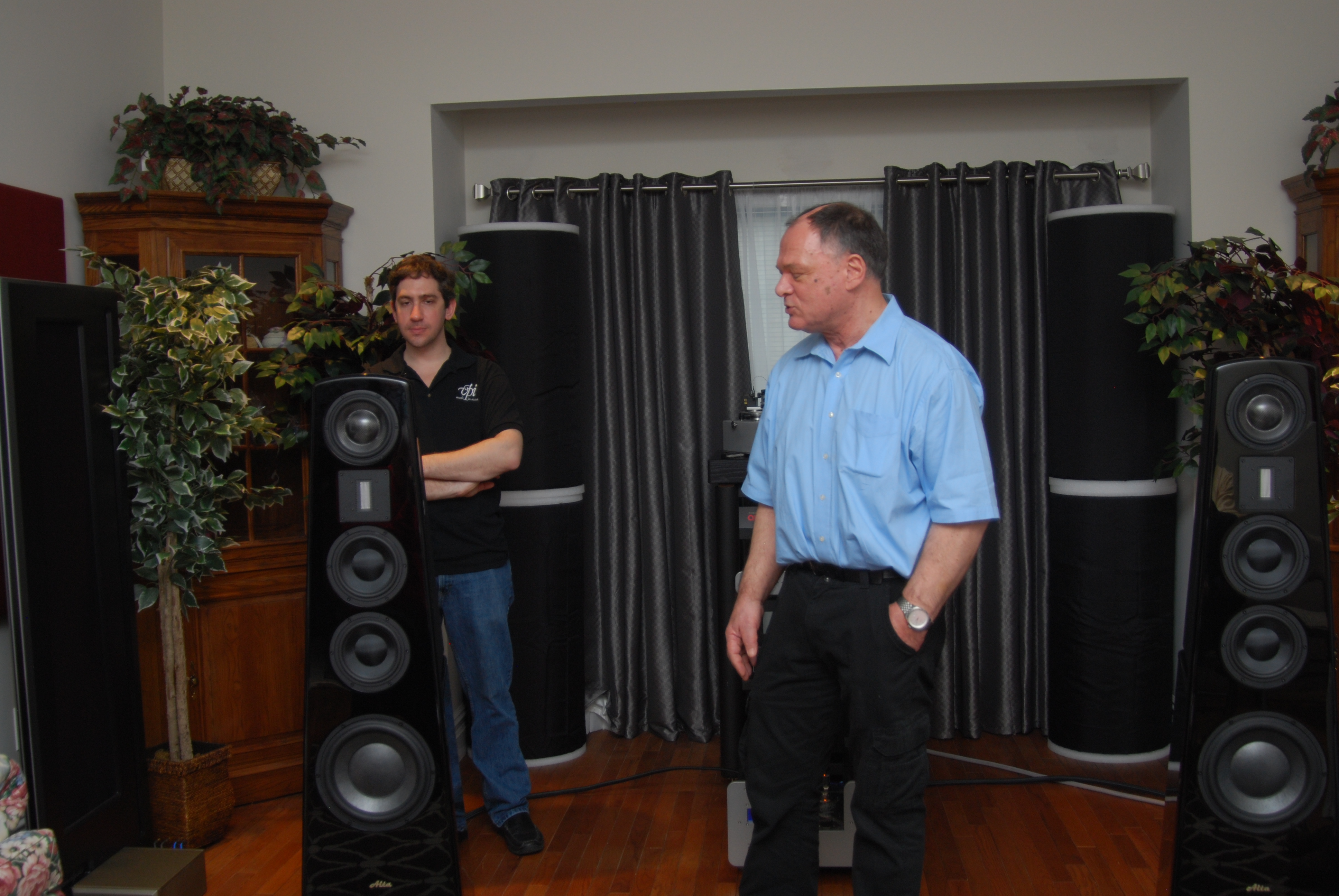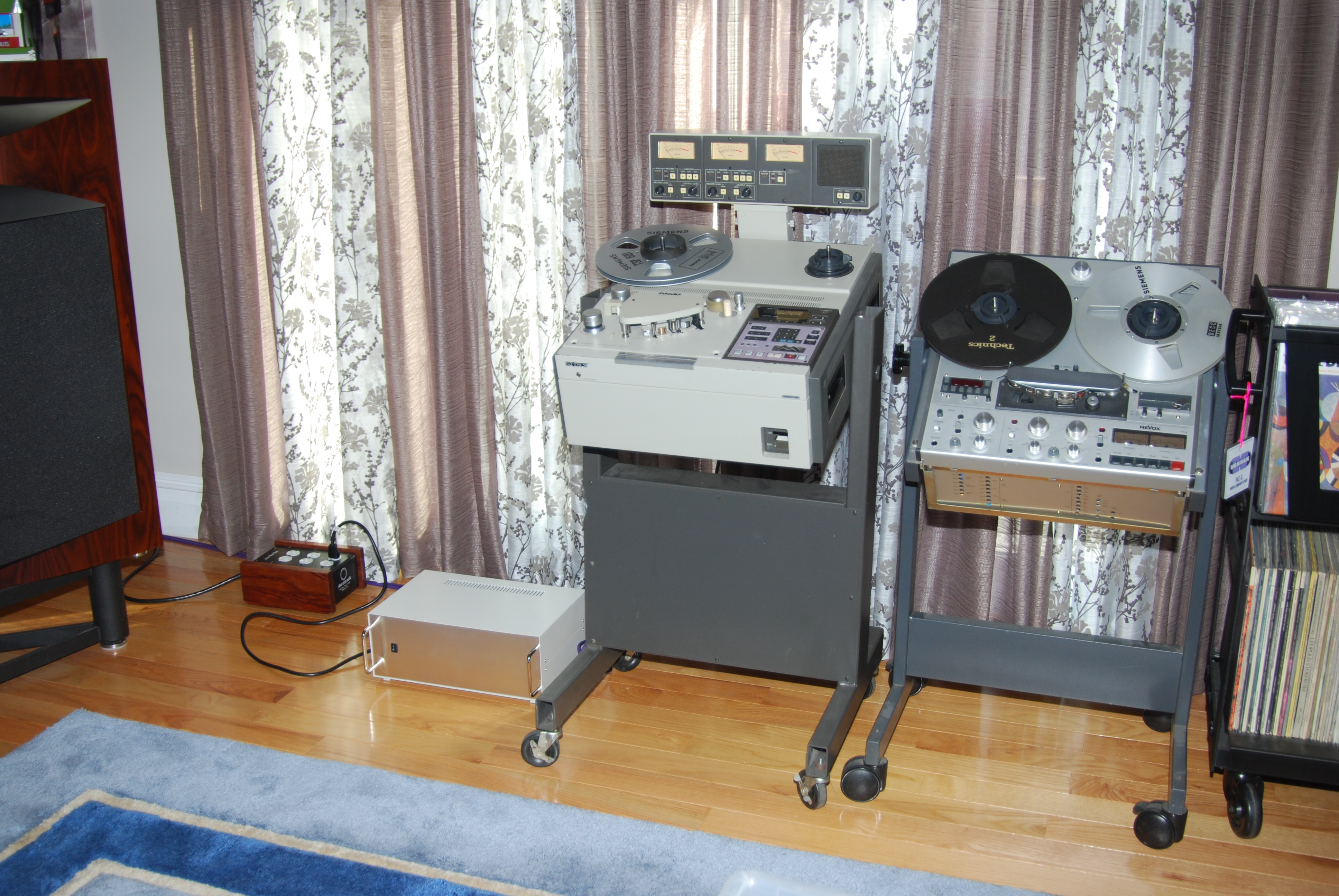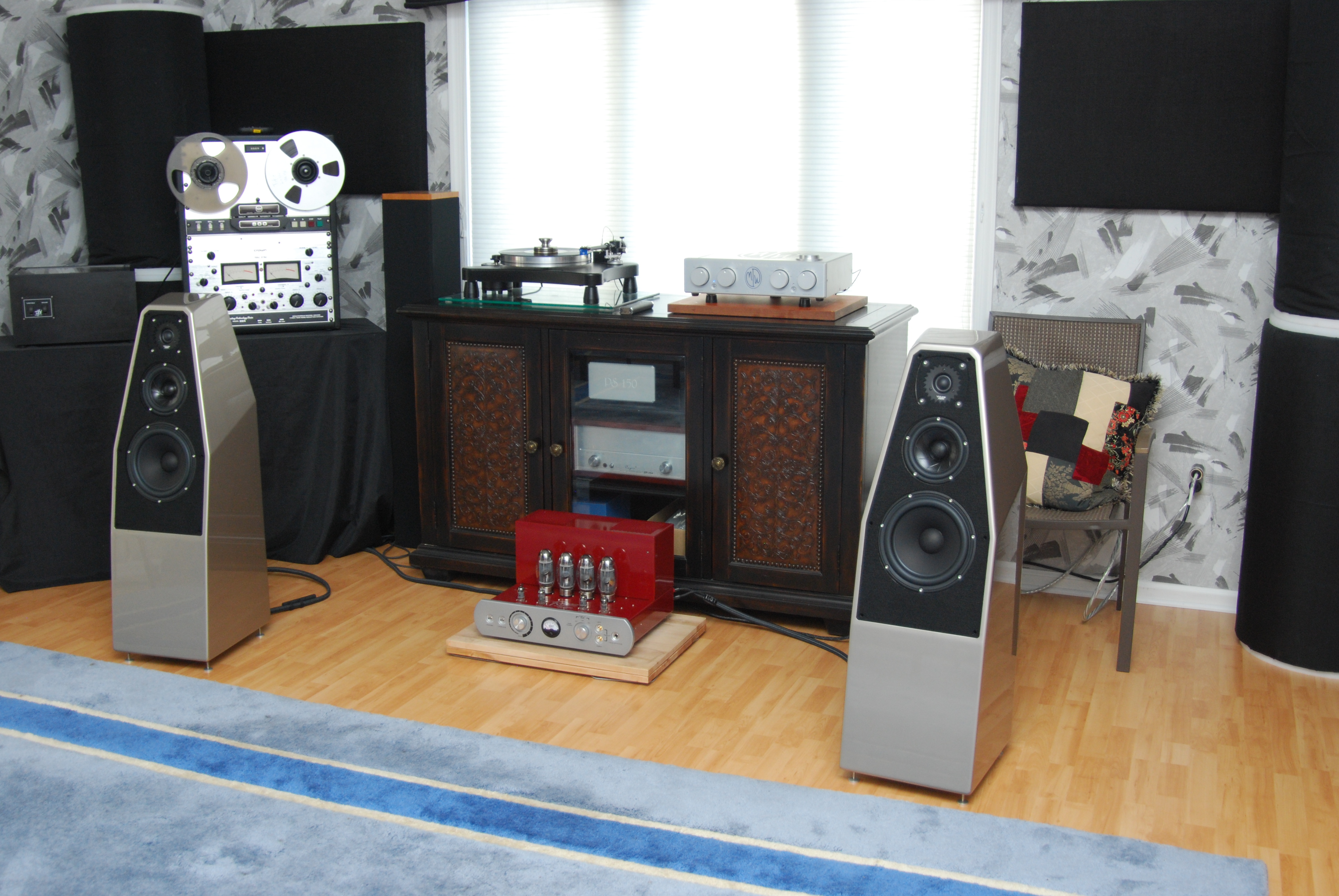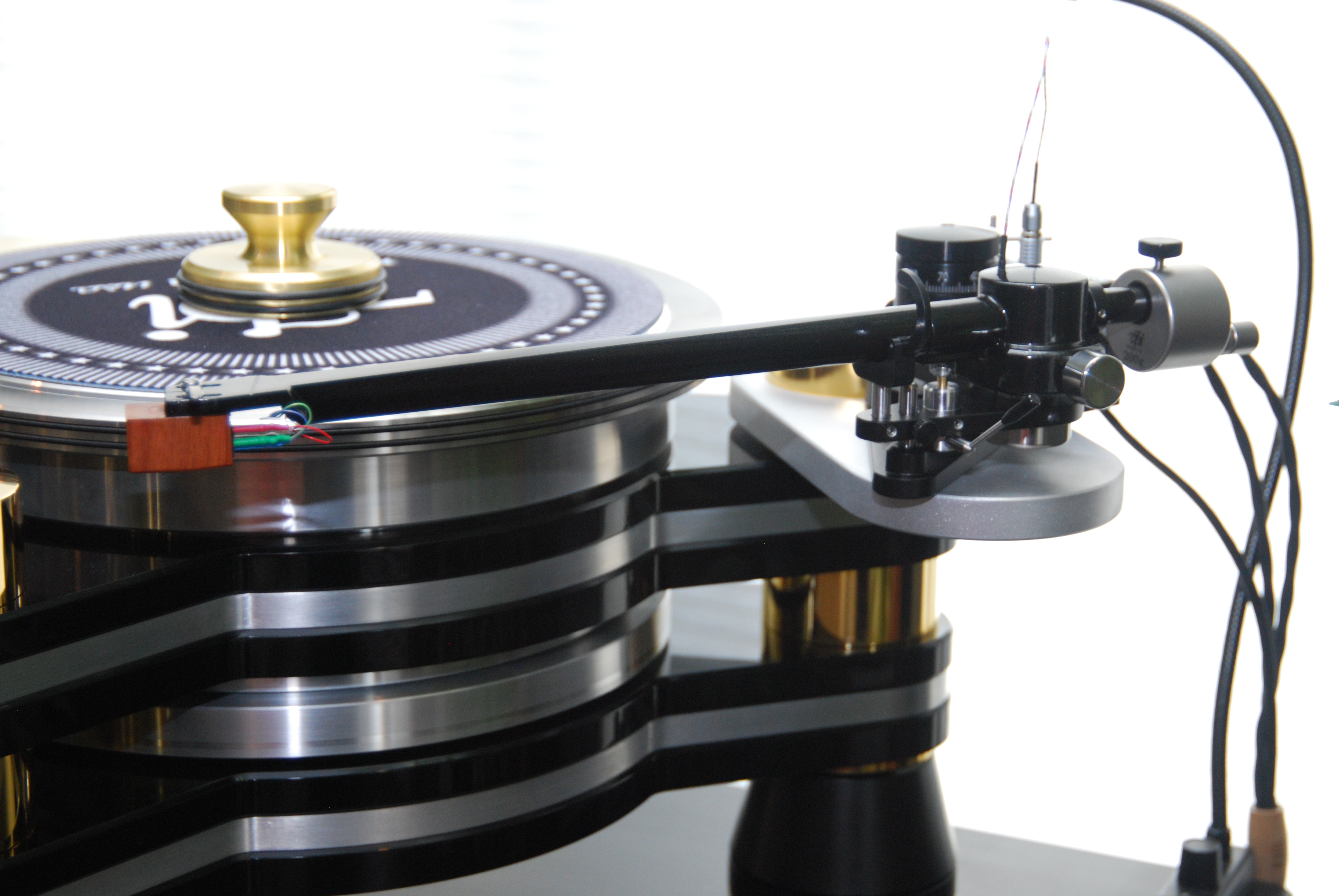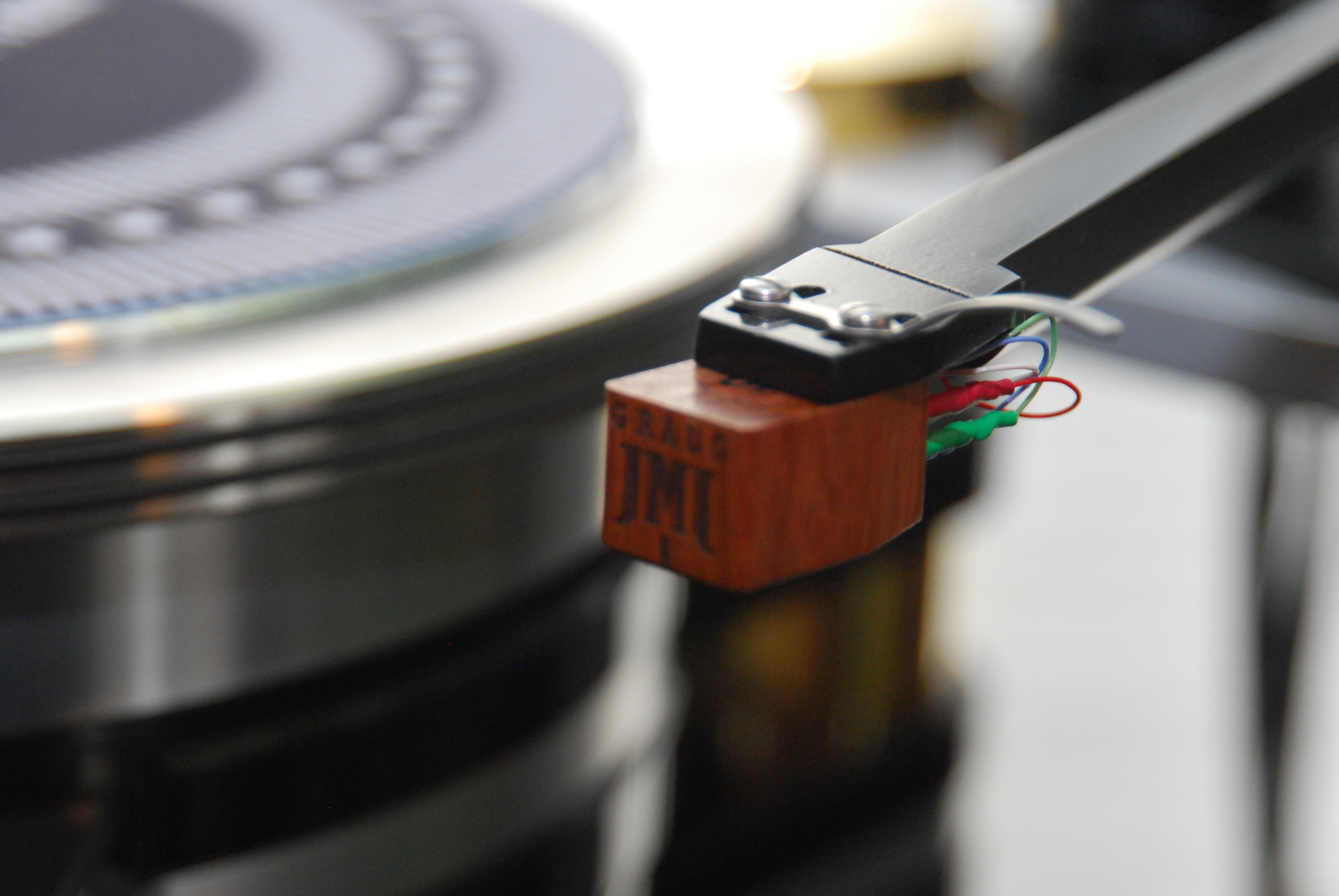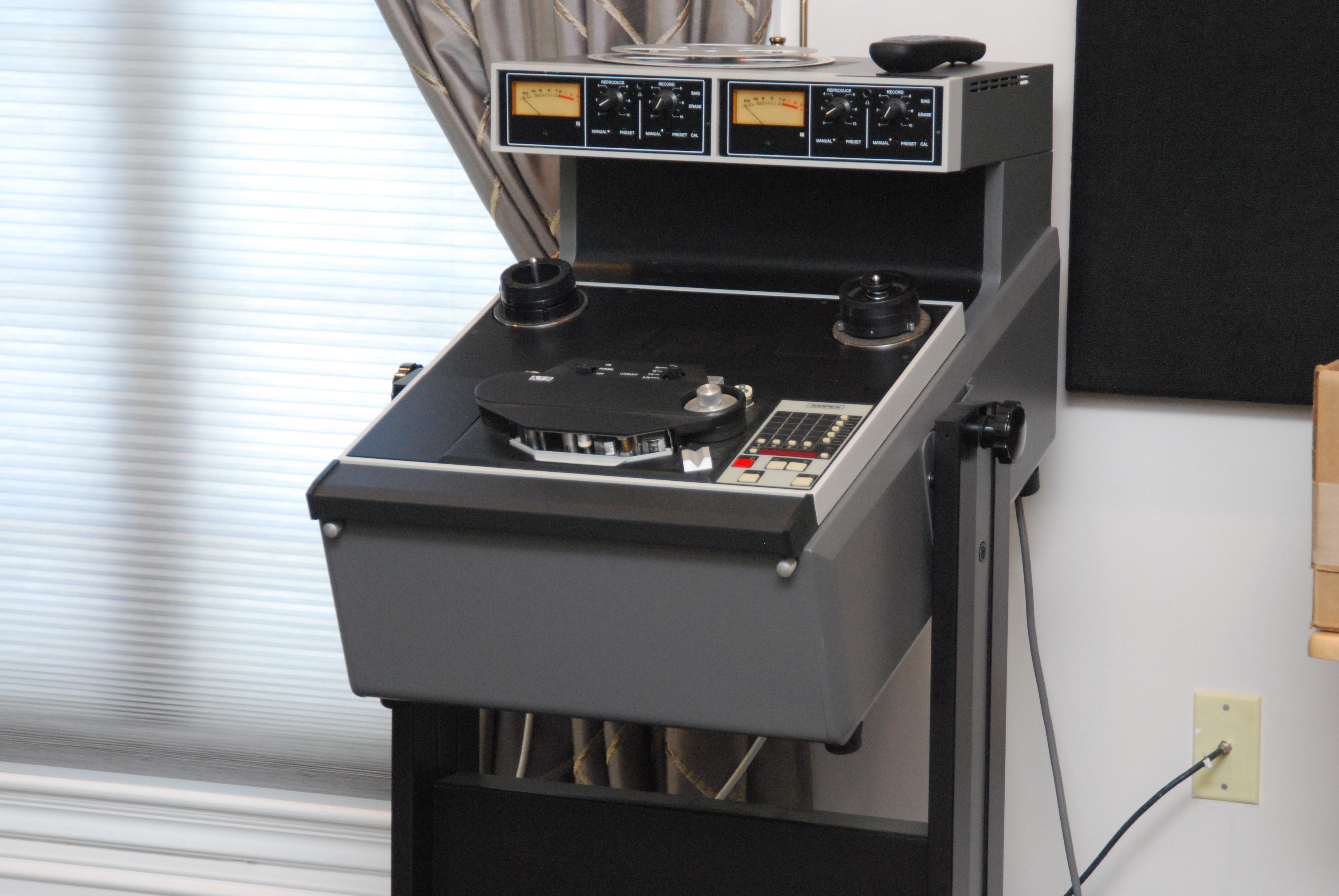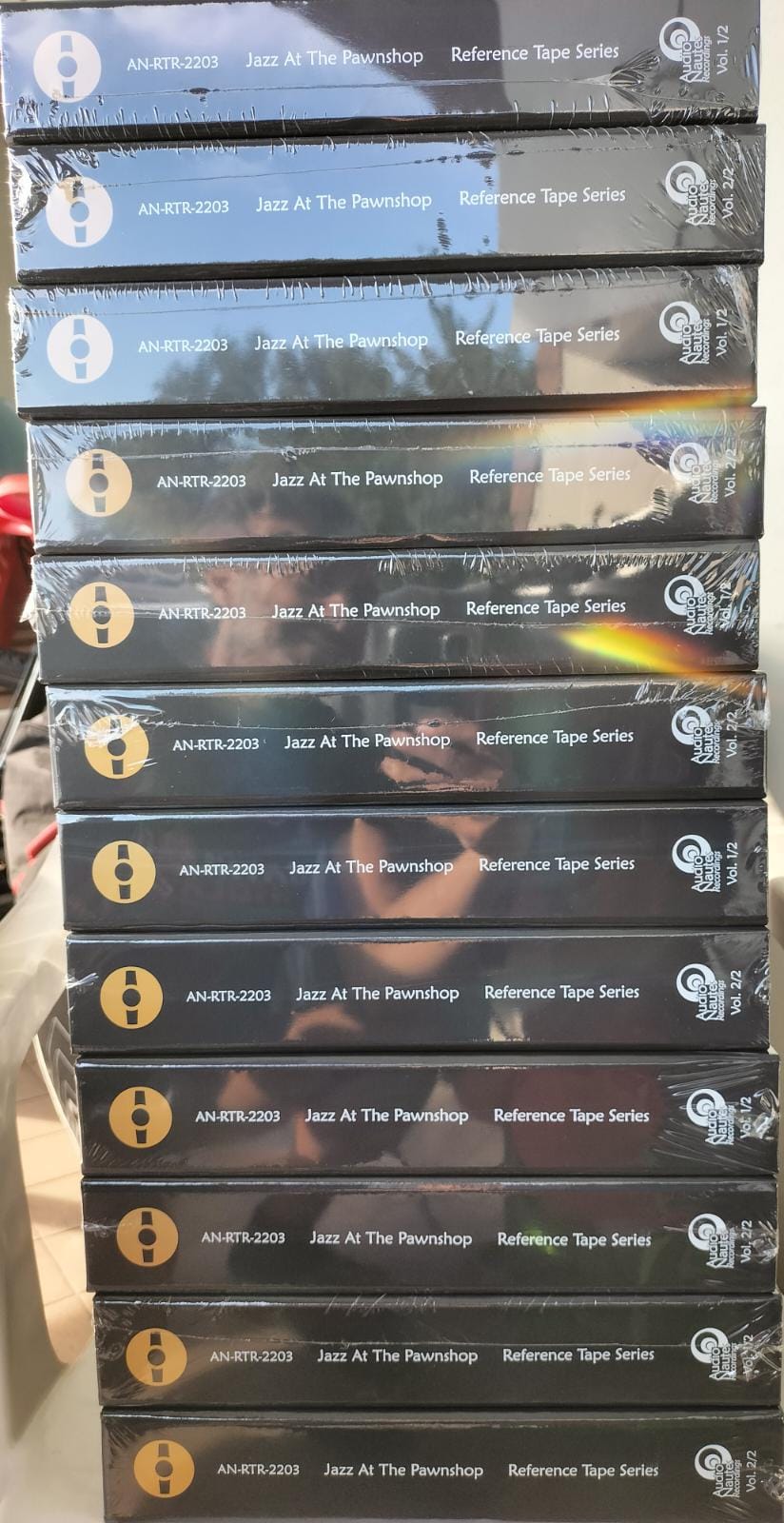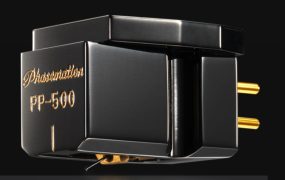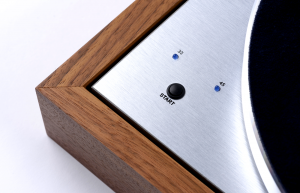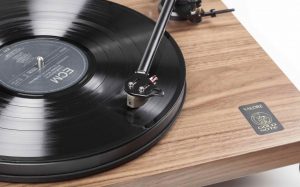Everyone jumped in their vehicles at the end of the factory tour and drove—or caught a ride—to the "VPI Man Cave" for some listening sessions.
How did the VPI man cave come into being? "After Mom passed," Mat shared, "Dad wasn't living in the house since it was too big and we were paying taxes on it. They needed to Mat said, "either find something to do with the house or sell it." The idea of what to do with the house eventually became apparent at an audio show. There Mat realized after seeing VPI products setup in the field that he needed to up the ante and provide better dealer support. He needed a place for dealer training for turntable setup is sadly becoming a lost art.
With time, the VPI man cave has assumed other roles including being a place to host local audio clubs. More than that, the VPI man cave provided Mat shared, "a place for potential customers to have a plain old listening session and hangout with Mat and Harry. It is," Mat says, "a throwback to the old day of laid back, home like, no pressure sales situation. Back to a time before high-end became a business."
Currently the VPI House is home to five listening man caves (thought Mat and Harry are currently debating whether to knock down the wall between rooms two and three and create one large listening environment) filled to the brim with high-end audio equipment. Each of these companies represented at the house has shown at audio shows and collaborated with VPI during the years. Take someone like long time VPI collaborator (and friend) John Grado. When John was queried how long have the two companies worked together he responded, "how long they [VPI] been around?" Then there's a "relative" newcomer to the industry like Rogers High Fidelity owner and designer Roger Gibboni who found a natural synergy between his phonostage and "VPI being an analog based company." "Analog from front-to-back in all the systems," for as Roger says, "humans are analog." In fact, Roger's PA-1A phonostage is one of Harry Weisfeld's current go to phonostages. Long story short, the afternoon turned into a mini-audio show but with far more time for camaraderie. The companies represented this Saturday were:
- Alta Audio speakers
- Audioquest cables
- Egglestonworks speakers
- Grado cartridges
- JBL-Synthesis speakers
- KEF speakers
- Lyra cartridges
- McIntosh electronics
- Mod Wright electronics
- Nordost cables
- Odyssey electronics
- Ortofon cartridges
- Rogers Hi Fi electronics
- Shinola turntables
- Transparent Audio cables
- Wilson Audio speakers
Mat also had one additional surprise in store for the press attendees. That surprise was in none other than Chris Barron, founder and lead singer of the '90s group Spin Doctors. Who knew Chris was a budding audiophile? As it turns out, Chris is collaborating with VPI on a limited edition, turntable Kickstarter project with Chris personally autographing the first ten turntables.
Bring On the Marching Bands!
Much had changed at VPI's digs since my last visit roughly a year ago. On tap were three new integrated tube amplifiers from Rogers High Fidelity plus some solid-state monoblock amplifiers from Odyssey Audio. New speakers from Egglestonworks, Wilson Audio and Alta Audio had taken up residence at the VPI House. There was even a newly arrived and recently serviced and modified professional Sony APR-5003 reel-to-reel tape machine to keep Harry Weisfeld's Ampex ATR-102 company. Don't get, however, the idea that everything was new. Still there were the were the old standby KEF Blade 1 and JBL-Synthesis speakers and Mac electronics.
Kicking off the afternoon listening "rounds" was a "modest" high-end audio system featuring Egglestonworks Nika monitor speakers ($3700) being driven Rogers High Fidelity 65V1 25 wpc integrated tube amplifier. Records were played back on the new, Classic line inspired, Shinola/VPI turntable. The Shinola/VPI, like the Classic table, sports an Al top plate and 300 rpm motor. Everything was wired together with Transparent Audio cabling.
Rogers High Fidelity—the brainchild of EE Roger Gibboni—is a relatively new name to many audiophiles. Roger comes to the high-end audio world after working for years on high tech communications and radar projects for the Navy, GE, NASA and DOD. Following that stint, Roger founded Rogers High Fidelity in 2009. Now how strange is it for an engineer with Roger's credentials in solid-state electronics to design and build high-end audio equipment using an ancient, almost abandoned technology? "After all," Roger said, "vacuum tube engineering wasn't even taught in school." So why does Roger design tube equipment? (Now I'm pretty I'm not the first person to pose this question to Roger.) Simple. Tubes are still used in spacecraft communication. But more pertinently, Roger's had a long term interest in restoring old audio equipment. Why integrated amplifiers? That's because Roger feels, "there is more of a market plus a more efficient use of cables." His integrated amplifiers feature a unique vacuum tube circuit design utilizing pentodes in front end. The phono section will drive any length interconnect cables.
Next stop was the system headlined by the Alta Audio Hestia speakers first publicly demoed last year at the New York Audio Show. At the New York Show, the Hestias were driven by solid-state Krell amplifiers; here, Mike Levy's speakers were powered by the top-of-the-line $20K Rogers High Fidelity 34S1 dual mono integrated amplifiers. Everything in this integrated amplifier down to the integrated amplifier's power supply is completely dual mono. The front-end in this room consisted of the latest VPI Avenger Reference replete with rim drive ($15K) and VAS Nova cartridge tracing the record grooves feeding the Rogers High Fidelity $7300 PA-1A phono section. Everything in this system was connected by AudioQuest cabling.
Then it was time out for a short food and social break. When everybody finished chowing down, it was onto the next room fronted by the JBL-Synthesis speakers, Mac electronics and three VPI tables (Prime Signature, Prime and Scout). Just to round out the analog contingent, there was even a pair of reel-to-reel decks in the room (Sony APR-5003 and Revox PR99).
The fourth stop on the spelunking expedition featured the $13,900 Rogers High Fidelity top-of-the-line EHF200 integrated amplifier driving Wilson Audio Sabrina speakers. This 112 wpc integrated allows owners the choice of using either KT120 or 150 tubes and operation in either ultra-linear and triode modes. Rounding out the rest of the system was Dan Wright's highly regarded $7900 Mod Wright 150 Reference tube phonostage and VPI's latest Scout Prime turntable with upgraded 3D arm and Ortofon Quintet Blue cartridge. AudioQuest interconnects and speaker cables filled out the rest of the system. There was even a blast from the past seeing a Crown 800 reel-to-reel deck with DBX sitting there too.
Dan Wright, too, has enjoyed a long relationship with VPI. Both companies have frequently worked together at audio shows and Dan was, "more than happy to support Mat and Harry's project," adding, "it's good for everybody." Released in 2015, The Mod Wright 150 Reference tube phonostage features on the fly, front panel loading and passive RIAA filtering. Under the hood are a pair of 2x6C45 and 6922/6DJ8/7308 and gain is adjustable up to a maximum of 72dB using a step-up transformer. Good news too for those with mono and stereo cartridges! The Mod Wright phonostage has inputs for two tonearms. The Sabrinas, unfortunately, had less than 20 hours under their belt so it would be a bit premature to comment—as much as I would like—on the system's sound.
Last stop on the mini-show tour was the biggest of the five listening rooms and home to the KEF Blade 1 speakers (that were in place last time). This time, though, the KEFs were being driven by two pairs of Klaus Bunge's Stratos Odyssey monoblock solid-state amplifiers instead of VAS tube amplifiers. The rest of the system consisted of several new or pending VPI products including the new Mike Bettinger designed Aurora phonostage, the simply massive Titan table and Fatboy 3D tonearm. The new 1mV output, $3500 Grado Statement 2 was Harry and Mat's cartridge of choice that day and wiring by Nordost.
Klaus Bunge, the distributor of the Odyssey amplifiers has like all the other contributors an established, long term working relationship with VPI. Coincidentally, Harry and Mat also used the Odyssey amplifiers last year at the Capital Audiofest and were so impressed that they brought them home with them. These Stratos amplifiers—like 90% of the orders Klaus receives and ships—are a custom-made design. The Odyssey amplifiers are a wide bandwidth, 180 wpc, Class A/B design that doubles down to 2 ohms. Pricing depends upon the mods—that are in part biasing the current to match the average wall voltage—tops out at $6000 to $7000.
This, along with the JBL-Synthesis room, was where much of my listening time was spent. That was in the case of the former system to hear more of the new Titan table and in the latter system reel-to-reel tape. And just like the last time, the KEF system didn't fail to impress (nor have the new Blade 2s at the last couple of audio shows either). It's funny but the Blades left me cold the first few times I heard them at audio shows. All I could think of was rock and roll speakers. But boy was I wrong.
Pretty much every component in this system, outside of the KEF Blade speakers, had changed since my last visit. The biggest sonic change in the system since the last visit was a more relaxed and effortless quality to the music. That was coupled with spot on tonality, imaging and soundstaging. Now one might have expected a mid-range centric sound given that Mat and Harry had chosen to use the Grado cartridge. But the system was far more balanced than would have been expected with good extension at the frequency extremes. Something that older Grado cartridges weren't particularly renowned for. Where the system strayed the furthest from the ultimate lie in the ability to retrieve low level information. Here for instance, guitars just didn't have that last vestige of information and finesse that one hears live or on other systems.
But make no mistake: this is no ordinary Grado cartridge. "The new Statement V2," according John Grado, "was introduced about 2 years ago. Grado has since the early '70s," John added, "worked on fine tuning their cartridge design and in particular how to reduce effective moving mass and wind coils." The new Statement 2 is 3.5 gms heavier than the earlier Statement cartridges coupled with a weight distribution shift of the stylus relative to the cartridge body. This new Grado certainly belongs on anyone's cartridge shopping list in this price range.
The day was capped off by Mat bringing in one of the last of the original Scout tables off the assembly line in a silver finish for Chris Barron to autograph. Mat intends to keep this table around for the rest of year for others to autograph; at the end the table will be auctioned off with all the proceeds going to the Wounded Warrior Project to support our veterans.
Spooling Up in the Man Cave
After most of the guests had left for home, Harry, his fiancé Stella and I spent an hour or so listening in the Mac/JBL-Synthesis room to some of my reel-to-reel tapes on his newly arrived Sony APR-5300 tape machine.
For the record (or should that be for the tape?). Harry, some twenty years of so ago, was one of the first people to introduce me to the joys of tape. Besides the sound of tape, Harry has always used reel-to-reel tape as benchmark for his turntable designs! (For those who don't know, Harry acquired when Bert Whyte passed away his massive reel-to-rrel tape collection consisting of many masters as well as those safety copies that recording engineers were known to trade with each other back then). Harry's love for reel-to-reel tape then waned for a couple of years during which time I returned the favor and kept his love of tape alive
Then a couple of years ago, Harry bit the bullet and purchased a professional Ampex ATR-102 from Chad at Acoustic Sounds; Harry then recently followed up the purchase of the Ampex deck with the underrated Sony APR-5003 deck from Jonathan Horwich of International Phonograph, Inc. (serviced and modded by Jonathan's top notch tech Soren Wittrup). Sony decks are highly regarded but the proclivity of their onboard power supply to overheat is their Achilles' heel. What's special about Harry's deck is that Soren removed the Sony's internal power supply and placed it an external box so to overcome the overheating issue.
One of the 15 ips tapes that I had brought down was a limited edition, second generation copy of Joe Trischler's The Doctor Is In. This copy was meticulously and lovingly transferred by Andre Jennings of TAS (at the original 355 nWb recording level) from Joe's original, highly modded, Crown recording deck to his Otari MTR-10 profession recording machine with newly installed Flux Magnetic heads). Three other 15 ips tapes that I schlepped down from New York to Holmdel included the amazing sounding Yarlung Records recording Smoke and Mirrors (it was between this tape and Yarlung's recording of Frederic Rosselet playing Bach and Ligetti on cello) and two second generation, direct copy tapes from Jonathan Horwich/International Phonograph's including the magnificent sounding Dee Alexander Magic and Pierre Sprey's late '80s recording of Clifford Jordan Live at Ethels. The Clifford Jordan also marks the first time this original analog recording is available in the analog format! The tape is so superior to at least the original CD that it's not funny. Let's face it. 15 ips tapes make many a system sound like a million dollars! Here, all four tapes strutted their stuff—especially as the deck warmed up—through the system. The midrange tonality of Dee's voice as well as Joe's custom made guitars was simply breathtaking. Nor was there any lack of dynamics or shadings on the Smoke and Mirrors tape. The sense of being in the audience listening to Clifford Jordan blow away on his tenor sax was wonderfully rendered. Perhaps in a little bigger room the JBL-Synthesis speakers would breathe even more and the midrange would become a touch more transparent.
Everything just turned out almost perfect this day. Couple a 70 degree winter day, great company and audio discussions, five rooms of gear to listen to and we're talking the perfect audio storm! (unfortunately, I ran into the mother of all storms as Harry and Stella drove me to the Jersey Transit station to head home!) Thanks go out to Mat, Harry, Jane, Shirley and everyone else at VPI for putting this enjoyable and interesting audio visit together!
Mat Weisfeld welcoming everyone to the VPI House. A gaggle of Avenger decks (Standard, Plus and Reference) are on display.
System number one with Egglestonworks, Rogers High Fidelity, Shinola and Transparent Audio. (Chris Barron of Spin Doctors sitting in the sweet spot!)
System number two fronted by the Alta Audio Hestia speakers! Alta Audio designer Mike Levy is giving low down on the design while Mat Weisfeld lurks in the background!
System number three featuring Mac electronics, JBL-Synthesis speakers, VPI tables and the first appearance of reel-to-reel tape machines. (note the outboard power supply next to the Sony deck.)
The fourth room featuring Wilson Audio Sabrina speakers and Rogers High Fidelity and Mod Wright electronics.
All out system five showcasing the KEF Blade 1 speakers. The new sleeker, heavier mass aka JMW Titan Fat Boy dual pivot arm is mounted on the Titan turntable. (note: if you look closely, you can see the new dual pivot upgrade here!) Oh, also check out the gold version of the VPI Titan!
The official signing of the Scout turntable that will be sold and the proceeds donated to charity at the end of 2017.
 Some final audio porn. The new Tzar cartridge from Russia and distributed by Robyn Wyatt and a one of a kind, non-operation, leather finished VPI Prime table.
Some final audio porn. The new Tzar cartridge from Russia and distributed by Robyn Wyatt and a one of a kind, non-operation, leather finished VPI Prime table.




